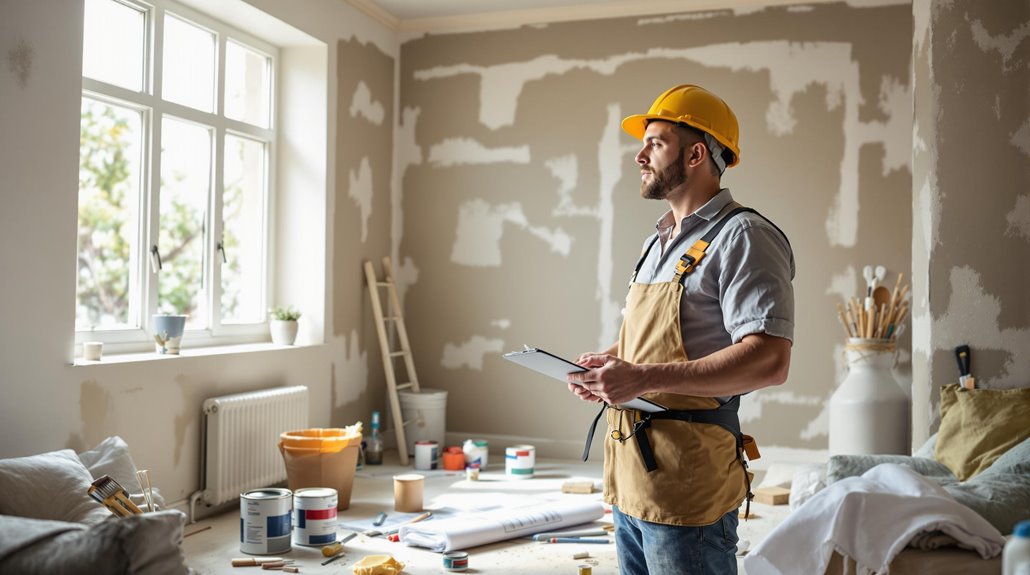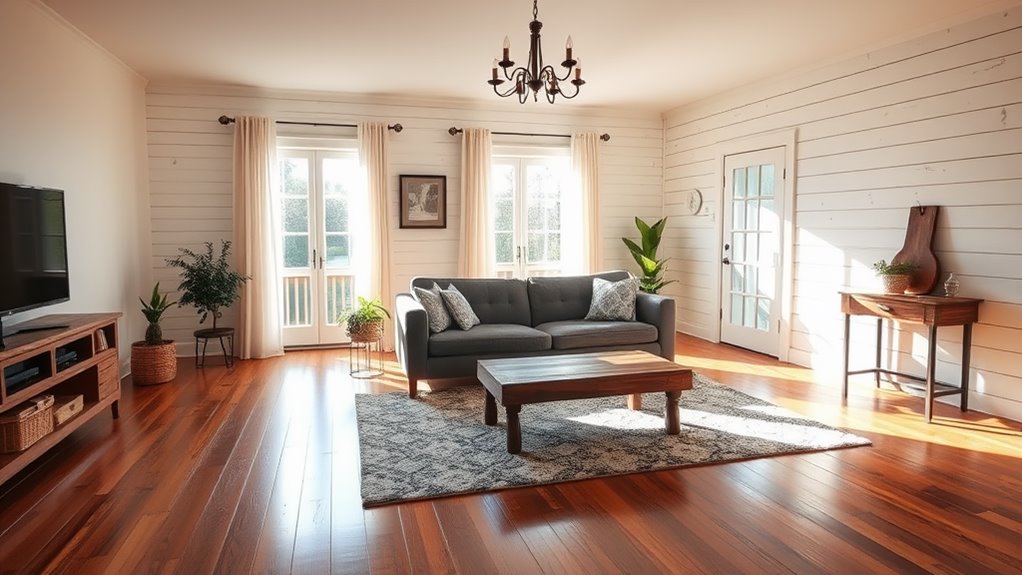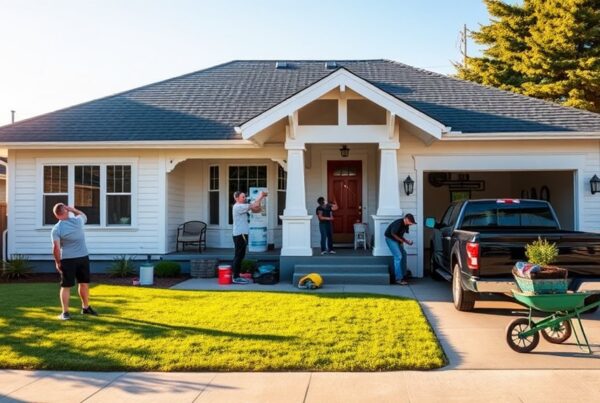Flipping homes remains a lucrative venture with the right strategy and market conditions. You can secure substantial profits, as seen in Q3 2024’s average ROI of 28.7%, but success hinges on meticulous planning, accurate budgeting, and a deep understanding of local real estate dynamics. While the potential for significant gains is evident, with average gross profits nearing $70,250 per flip, risks such as unexpected renovation costs market volatility and capital gains taxes can quickly erode margins. Thorough financial analysis, adherence to the 70% rule, and a realistic assessment of both the rewards and challenges are essential to determine if flipping homes is worth it and if it aligns with your investment goals.
Key Takeaways
- Flipping homes offers high average ROI (28.7%) but comes with significant risks like unexpected renovation costs.
- Adherence to the 70% rule minimizes risks and ensures profitability in house flipping.
- Short-term capital gains taxes and unforeseen expenses can substantially reduce net profits from home flipping.
- Market volatility and accurate property value estimation are crucial for successful house flipping.
- Flipping requires intensive effort and resources compared to renting, which provides steady but slower returns.
Is Flipping Homes Worth It
How do current house flipping market trends affect your potential ROI? The average ROI in Q3 2024 stood at 28.7%, with gross profits nearing $70,250 per flip, suggesting that flipping houses can still be lucrative. In 2022, flipped homes made up 8.4% of all U.S. home sales, highlighting the sector’s resilience and market presence. Stabilizing interest rates in 2024 have renewed investor confidence, countering the volatility experienced in 2023 due to inflation and rising costs. Regional variations also play a role; for instance, Pennsylvania reported an ROI of 80.2% in Q2 2024, underscoring the significance of location in maximizing returns. With average gross profits in Q1 2024 reaching $72,375, the data indicates that, if executed strategically, flipping houses is worth it. However, you’ll need to analyze local market conditions, as profitability varies greatly across states. Understanding these trends is essential to evaluating whether flipping houses aligns with your financial goals.
Evaluating Profitability and Financial Considerations
When considering house flipping, you’ll need to carefully assess profitability by examining key financial metrics. Is flipping houses profitable? The data reveals average gross profits of nearly $70,250 in Q2 2024, but you must adhere to the 70% rule to mitigate risks. ROI trends show a decline to 28.7% in Q3 2024, underscoring the importance of strategic planning. Unforeseen renovation expenses can erode profits dramatically, sometimes reducing returns by as much as two-thirds. In addition, short-term capital gains taxes can further diminish net profits.
- Witness how renovation costs can escalate, eating into your bottom line.
- Feel the pressure of declining ROI rates in a competitive market.
- Realize the impact of tax liabilities on your hard-earned profits.
- Experience the relief of adhering to the 70% rule to safeguard returns.
Is Flipping Homes Worth It?

Although flipping homes can be lucrative, it’s important to recognize the risks and pitfalls that can quickly erode profits. Unforeseen expenses, such as foundation problems, can slash profits by two-thirds, emphasizing the need for thorough inspections and contingency budgets. The average flip takes four to six months, but delays escalate holding costs like property taxes and insurance. Underestimating renovation expenses is common; for instance, an $80,000 kitchen remodel might only recoup $39,000, highlighting the significance of strategic budgeting. Market volatility also poses a risk, as fluctuating housing demand can impact property values, making market research essential. Additionally, ignoring capital gains taxes can greatly reduce profits, as short-term gains are taxed at higher personal income rates. Understanding the 70% rule is crucial for determining the maximum purchase price and ensuring a profitable flip, as it helps balance renovation costs with the property’s potential resale value. Is flipping homes worth it? While the potential exists, these risks require careful planning and analysis to mitigate losses and maximize returns.
Comparing Flipping vs. Renting as Investment Strategies
Why choose between flipping and renting when each strategy serves distinct investment goals? Flipping homes offers the potential for quick profits, with a 26.9% average return, but it’s labor-intensive and exposes you to high short-term capital gains taxes. In contrast, renting provides consistent passive income, lower long-term tax rates, and expense write-offs, though it requires patience. In 2022, the average flip yielded $67,900, but rental income offers steady monthly cash flow. Market conditions also influence outcomes; a rising market favors flipping, while a stable rental market benefits landlords. Understanding local market trends is essential to determine which strategy aligns with your financial goals and risk tolerance.
Consider the emotional impact of each strategy:
- Flipping: Thrill of fast returns but sleepless nights managing renovations.
- Renting: Stability over time but dealing with tenant issues.
- Flipping: High-stakes game requiring precise timing and market insight.
- Renting: Long-term wealth-building with lower daily involvement.
Weigh the pros and cons of flipping houses against your financial goals and risk tolerance.
Essential Steps to Succeed in House Flipping

To succeed in house flipping, you’ll need to meticulously plan and execute each step of the process. Start by creating a detailed budget that includes all acquisition, renovation, and selling costs to avoid unforeseen expenses that can cut into profits. Aim to purchase properties at no more than 70% of the after-repair value (ARV) minus renovation costs to guarantee a healthy profit margin. Conduct thorough home inspections before purchasing to identify potential issues that could lead to unexpected expenses. Hire reliable contractors to guarantee quality renovations are completed on time, helping to keep your project within budget and on schedule. Understand local real estate market trends to choose properties with growth potential, as this knowledge will inform competitive pricing. When considering if high end flipping is worth it, analyze market demand and potential returns carefully. Staying ahead of future market trends is crucial for making informed purchasing decisions and maximizing profits.
| Step | Key Action | Benefit |
|---|---|---|
| Budget Planning | Include all costs | Avoid unforeseen expenses |
| Property Purchase | ≤70% of ARV minus repairs | Guarantee healthy profit margin |
| Market Understanding | Analyze local trends | Enhance competitive pricing |
Conclusion
House flipping’s profitability hinges on timing and market conditions. With the median gross profit per flip at $70,000 in 2022, it’s easy to see the allure. Yet, nearly 34% of flippers operate at a loss, highlighting the risks. You must meticulously analyze costs, location, and renovation expenses to succeed. While the potential for high returns exists, underestimating these factors can lead to financial pitfalls. Always stay informed and strategic to maximize your chances of success.




